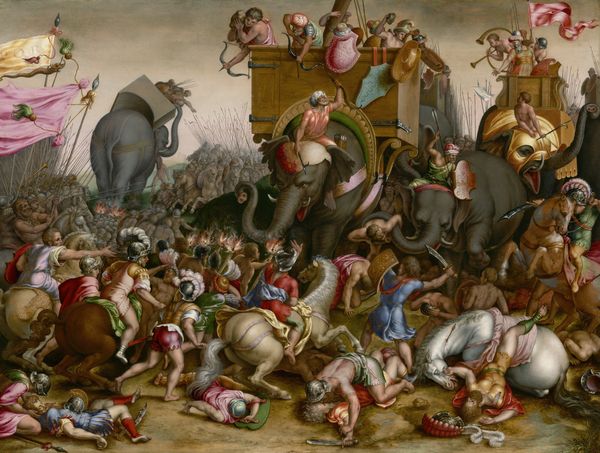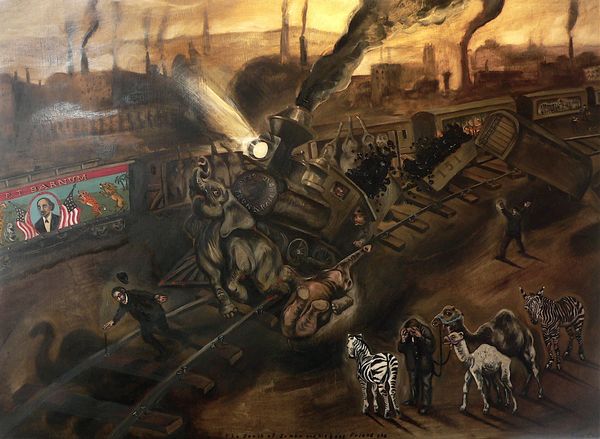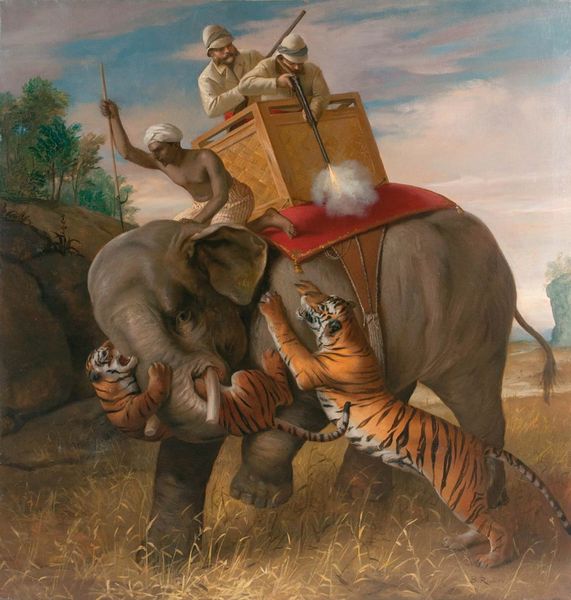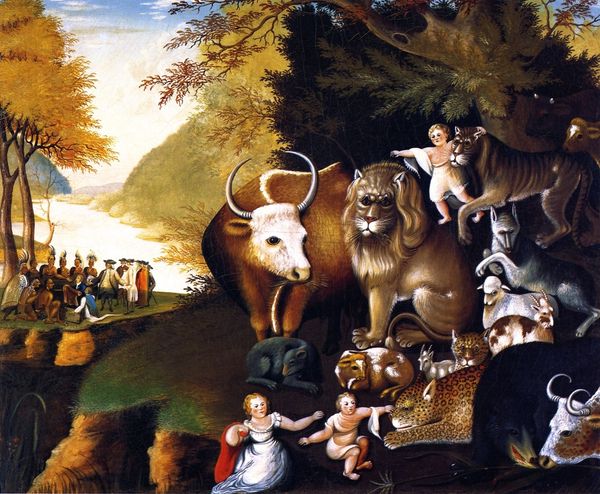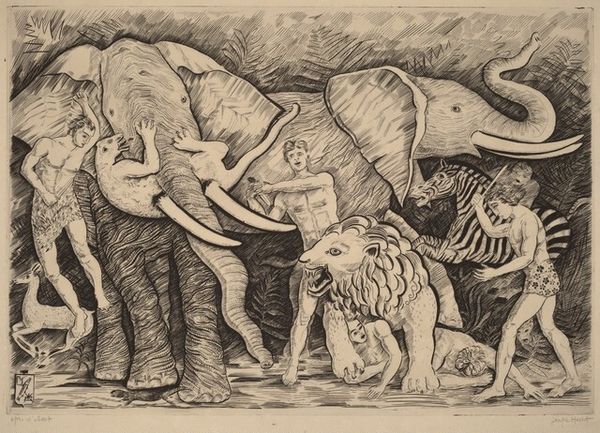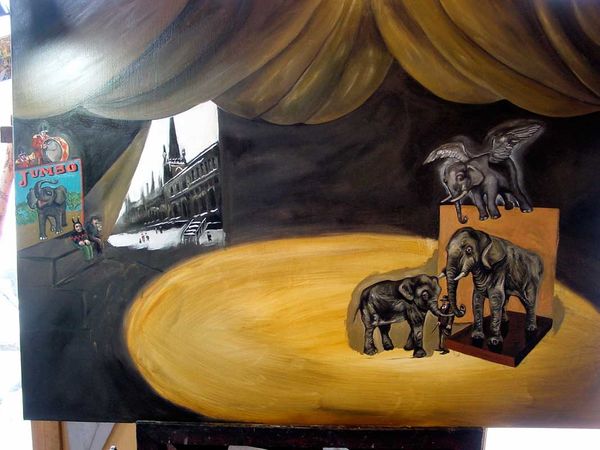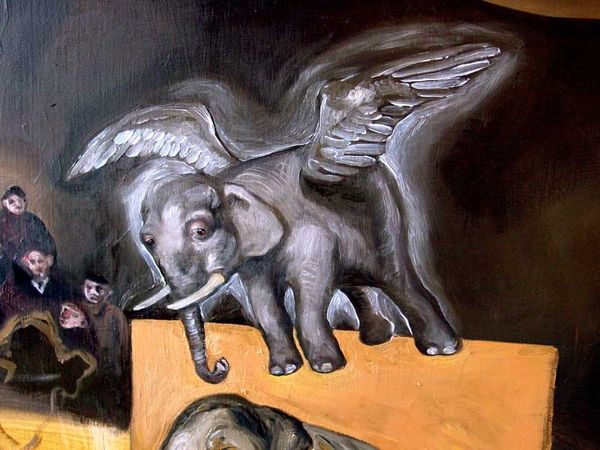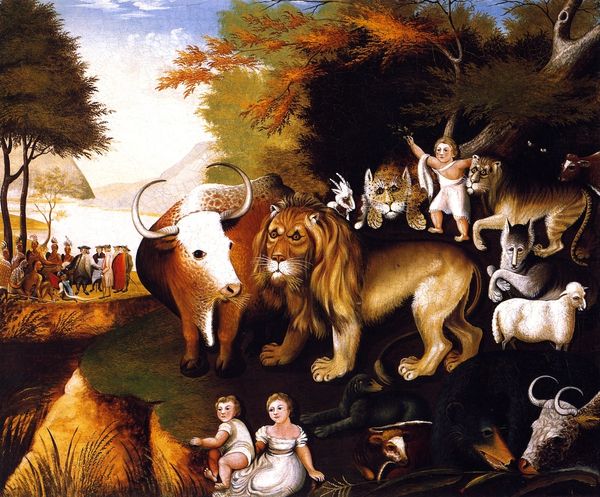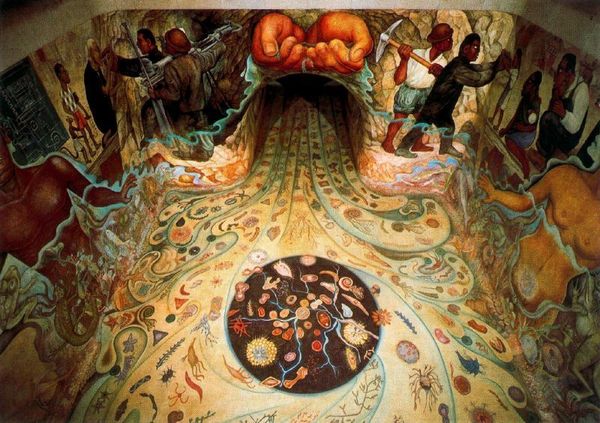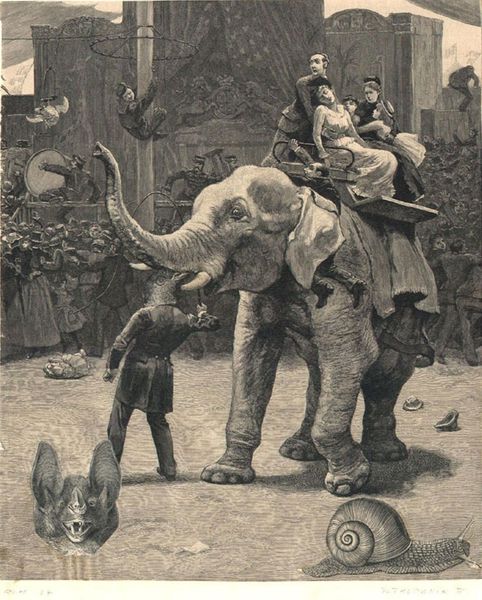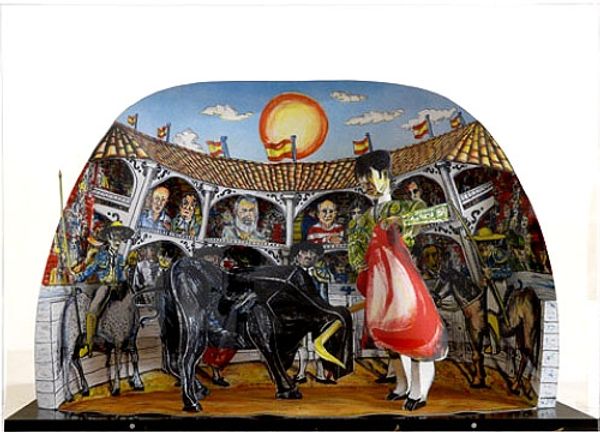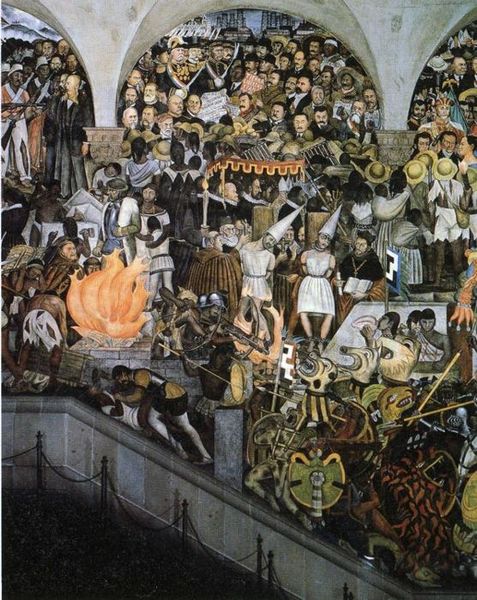
#
imaginative character sketch
#
fantasy concept art
#
animal
#
fantasy art
#
character art
#
graffiti art
#
fantasy illustration
#
concept art gaming
#
fluid art
#
child
#
street graffiti
#
character illustration
#
mythology
Copyright: Sue Coe,Fair Use
Curator: Welcome. We're standing before Sue Coe's striking piece, "Blind children feel an elephant". Editor: Immediately, I’m struck by the heavy atmosphere. It's dark, both in color and tone. The children clustered around the elephant seem vulnerable. It brings up a deep sense of pathos. Curator: Indeed. Coe often confronts power structures and social injustices, and this piece is no exception. Here, she seemingly juxtaposes the spectacle of the circus, represented by that poster, with the gritty reality of the industrial landscape behind them. Editor: The juxtaposition is stark. The city belches smoke while these children, marginalized perhaps by their blindness, tentatively explore an animal that likely suffers its own form of captivity within this environment. It all seems intertwined. Curator: Precisely. The work raises questions about how society treats the vulnerable. How those without power often find themselves at the mercy of systemic forces. It's noteworthy that circuses historically held problematic displays, from animal exploitation to ableist attractions. Editor: And note the poster's advertised price, “25c.” That price stands in sharp contrast to the intangible costs – the ethical costs – displayed so plainly across the broader scene. Is it that those with the least often pay the most, so to speak? Curator: Coe has used this motif, a common children's fable, to ask viewers to challenge these systems, to consider how these spectacles impact lives beyond simple entertainment. Also it brings questions on what they can and can't see; we all look at things with particular lenses. Editor: Ultimately, “Blind Children Feel an Elephant” is a visual metaphor laden with socio-political critique. Coe reminds us that ignorance is no excuse when structural oppressions define daily reality. It encourages engagement with complex relationships between humanity, animals, and environments. Curator: Absolutely. It encourages us to consider our own "blindness" to injustices within our systems and question who benefits from such systems remaining unchanged. Editor: A bleak reminder and a rallying call, all rolled into one scene. It challenges the role of imagery and the act of seeing.
Comments
No comments
Be the first to comment and join the conversation on the ultimate creative platform.
